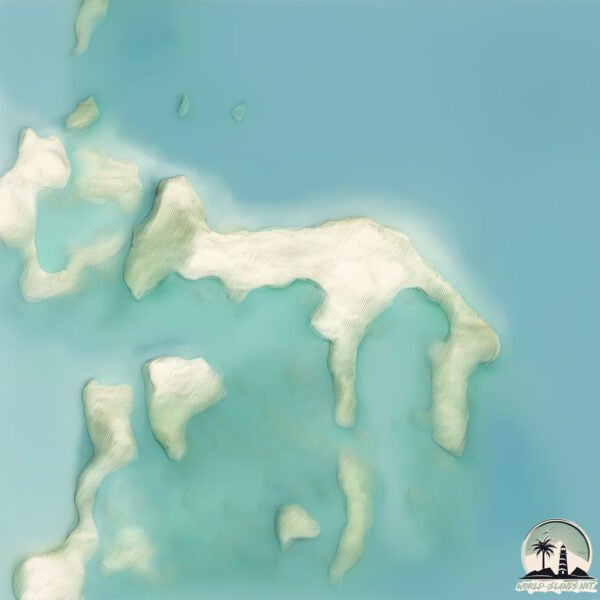La Coyota

Welcome to La Coyota, a Dry island in the Gulf of Mexico, part of the majestic Atlantic Ocean. This guide offers a comprehensive overview of what makes La Coyota unique – from its geography and climate to its population, infrastructure, and beyond. Dive into the details:
- Geography and Size: Explore the island’s size and location.
- Climate and Weather: Weather patterns and temperature.
- Topography and Nature: Uncover the natural wonders of the island.
- Infrastructure and Travelling: Insights on reaching, staying, and making the most of your visit.
- News and Headlines: Latest News.
Geography and size of La Coyota
Size: 1.483 km²
Coastline: 10.4 km
Ocean: Atlantic Ocean
Sea: Gulf of Mexico
Continent: North America
La Coyota is a Small Island spanning 1.5 km² with a coastline of 10.4 km.
Archipel: –
Tectonic Plate: North America – Covers North America and parts of the Atlantic and Arctic Oceans, characterized by diverse geological features and varying levels of seismic activity.
The geographic heart of the island is pinpointed at these coordinates:
Latitude: 24.75632095 / Longitude: -97.67639569
Climate and weather of La Coyota
Climate Zone: Dry
Climate Details: Hot Semi-Arid (Steppe) Climate
Temperature: Hot
Climate Characteristics: Features hot summers and mild to warm winters. Receives more rainfall than hot deserts but less than tropical savannas, leading to a somewhat more varied landscape.
Topography and nature of La Coyota
Timezone: UTC-06:00
Timezone places: America/Chicago
Max. Elevation: -1 m
Mean Elevation: -2 m
Vegetation: Shrubland
Tree Coverage: 72%
The mean elevation is -2 m. Remarkably, this unique island barely emerges above the sea level, showcasing nature’s fascinating interplay with the ocean. The island is characterized by Plains: Flat, low-lying lands characterized by a maximum elevation of up to 200 meters. On islands, plains are typically coastal lowlands or central flat areas.
Dominating Vegetation: Shrubland
Dominated by shrubs and small bushes, these areas are typical in dry, rocky, or sandy environments, as well as in regions with poor soil fertility. La Coyota has a tree cover of 72 %.
Vegetation: 2 vegetation zones – Low Diversity Island
Islands with two distinct vegetation zones offer slightly more ecological variety. These zones could be due to differences in elevation, moisture, or other environmental factors. While still limited in biodiversity, these islands may offer a contrast between the two zones, such as a coastline with mangroves and an inland area with grassland.
Infrastructure and Travelling to La Coyota
Does the island have a public airport? no.
There is no public and scheduled airport on La Coyota. The nearest airport is General Servando Canales International Airport, located 113 km away.
Does the island have a major port? no.
There are no major ports on La Coyota. The closest major port is BROWNSVILLE, approximately 136 km away.
The mean population of La Coyota is 31 per km². La Coyota is Gently Populated. The island belongs to Mexico.
Continuing your journey, Santa Marie is the next notable island, situated merely km away.
PUERTO MORELOS- QUINTANA ROO - MEXICO - LA COYOTA - LA ULTIMA GOTA



Mexico is classified as Emerging region: MIKT: Mexico, Indonesia, South Korea, and Turkey – Economies recognized for their development potential and emerging market status. The level of income is Upper middle income.
News – Latest Updates and Headlines from La Coyota
Stay informed with the most recent news and important headlines from La Coyota. Here’s a roundup of the latest developments.
Please note: The data used here has been primarily extracted from satellite readings. Deviations from exact values may occur, particularly regarding the height of elevations and population density. Land area and coastline measurements refer to average values at mean high tide.
